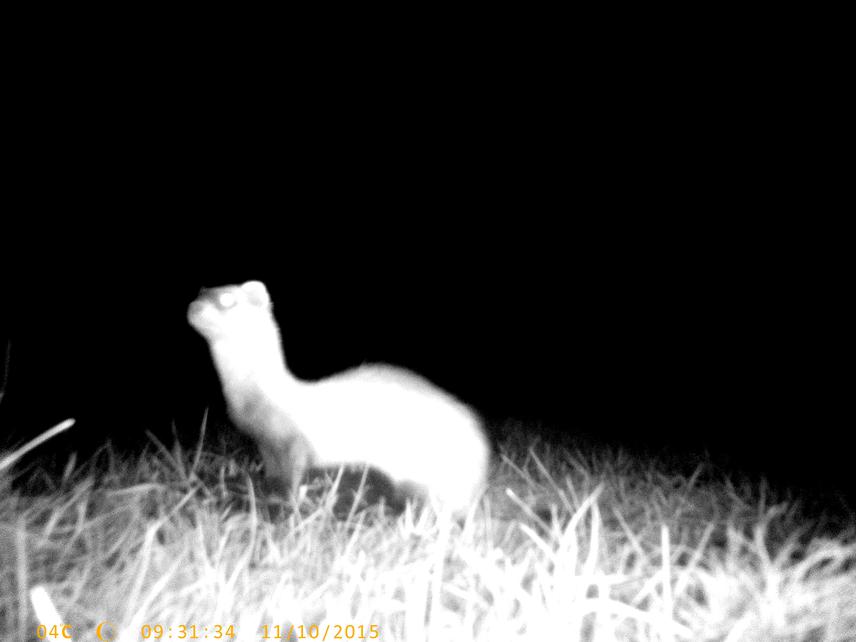Mitropolskiy Maksim
Other projects
30 Jan 2017
Implementation of Action Plan for the Conservation of Asian Steppe Species of Mammals and Birds in the Forest-Steppe Zone of the Western Siberia
Some Asian species are expanse to the North in the steppe of Western Siberia under the influence of climate change. This study proposes to examine the penetration of Corsak Fox, Steppe Polecat, Pygmy Souslik, Great Jerboa. Also habitat conditions of this species complex will assess in Uzbekistan. American Mink was acclimatized on Western Siberia and Uzbekistan. It is under the oppression of Marten in Siberia and began to dominate Stone Marten in Uzbekistan. This study proposes to evaluate the mechanism of this adaptation to Martens species in order to develop proposals to regulate it in Uzbekistan as aggressive species.

Steppe Polecat at Great Souslik colony (Camera trap picture. Date is not correct. Some problems with low temperature).
Some Asian species are expanse to the North in the steppe of Western Siberia under the influence of climate change. This study proposes to examine the penetration of Corsak Fox, Steppe Polecat, Pygmy Souslik, Great Jerboa. Also habitat conditions of this species complex will assess in Uzbekistan.
American Mink was acclimatized on Western Siberia and Uzbekistan. It is under the oppression of Marten in Siberia and began to dominate Stone Marten in Uzbekistan. This study proposes to evaluate the mechanism of this adaptation to Martens species in order to develop proposals to regulate it in Uzbekistan as aggressive species.
To achieve the results of the project participants are required to process the archive and literary materials by region, as well as collect new field data, using modern methods of lifetime research, in Asian and Siberian part of the area. For the second idea to collect data on the ecology of American Mink in Western Siberia, also for domination and oppression analyze to get morphometric data of the humerus fees from hunters. Analysis of the collected materials on environmental conditions and methods of adaptation will enable a complete forecast of success:
1. Extensions Asian species habitats to the North.
2. Understand the causes of American Mink plasticity to environmental conditions.